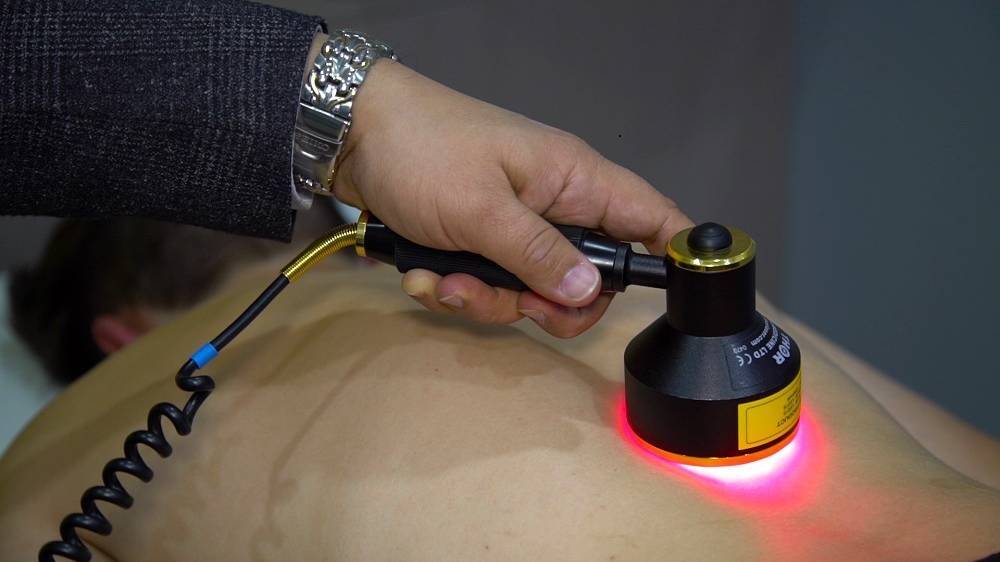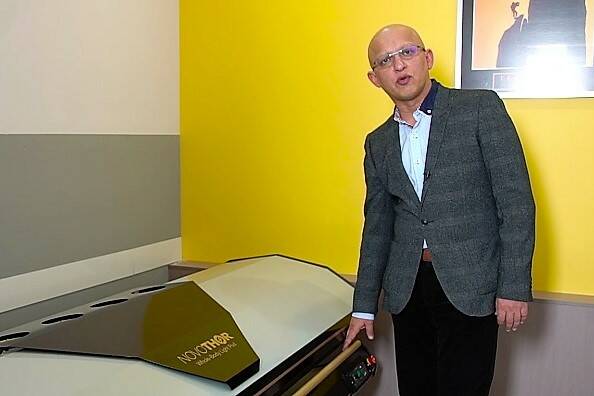One in five Australians suffer chronic pain, we need to find a better way to help them

Story sponsored by Healthcare Evolution Medical Group.
With one in five Australians suffering from chronic pain, experts say it is becoming increasingly clear that we need to find a better way to manage pain than with opioid based painkillers, which, when abused, can be deadly.
Dr Faisal Khan, a Newcastle based doctor with a passion for treating pain, is worried about the “emerging disaster” being caused by the over prescription opioids. That’s why he has invested heavily in Low Level Laser Therapy (LLLT) technology.
The process has no known side effects and has been found to be broadly effective in relieving many forms of pain. He is currently using the technology to help dozens of locals.
Seventy-year-old Laraine Dunn is one such local. She highly recommends the treatment, saying it has changed her life immeasurably for the better. She has suffered from chronic pain for more than five decades. The first time she had LLLT, was the first time she walked without any pain whatsoever.
When she was just 19-years-old, Mrs Dunn was involved in a nasty workplace accident. She was working as a secretary at the time but fell down two flights of stairs after tripping over a pencil. She hit her head on the wall and twisted, injuring her back as she tumbled.
”I was badly injured and severely concussed, which left me with debilitating pain for many years,” she explained.
“In fact, I’ve been living with pain for so long that I don’t even remember what it was like not to have it. It’s just the degree of pain that changes.”
At the time, doctors wanted to put metal screws and plates in her back to address the injury but that was considered radical in those days. She was also wary of pain killers. So, she looked for an alternative.

Over a 50 year period she has spent many thousands of dollars on non-medical acupuncture (dry needles) – which she says has worked well for her – but it wasn’t until recently that she discovered LLLT and started going every now and again.
However, when she fractured her spine 12 months ago following a fall, she now visits Dr Khan on a regular basis and says she couldn’t imagine what she would do without him.
Despite her chronic pain, Mrs Dunn refuses to take opioids. She believes they’re dangerous and says there are better ways to manage her condition.
“I have taken pain killers over the years but I’ve only ever taken them under the most severe circumstances, otherwise I’ve just learnt to deal with the pain.”
“There’s no end to them. All they do is mask the pain, so if I were to be put on them I’d be on them forever.”
It was this exact sentiment that inspired Dr Khan to invest so heavily in bringing LLLT to Newcastle. Pharmaceutical opioid deaths now exceed heroin deaths by a ratio greater than two to one.
He said doctors needed to question whether they were actually getting any outcome with opiate prescription, adding they were simply an addiction if used for long term.
“I personally think, how you treat your pain often determines how you cope with it and ultimately that’s how you heal,” he said.
“With the rise in opioid related addictions and deaths, the need for no-pill therapies is the necessity to help manage chronic pain.”
Dr Khan has personally invested in Low Level Laser Technology, including a full body Novo Thor laser bed, which is particularly useful in treating sports injuries, along with joint focused deep lasers.

While the treatment is not yet mainstream in Australia he was quick to point out that Lancet , PubMed and Cochrane Journals have been flooded with recent detailed studies about the “great results”. It is also widely used in the USA, Japan and Europe.
“Low-level laser therapy uses low energy light. It emits no heat and is non-invasive… It works by blocking pain fibers and slowing the transmission of pain messages. This pain blockade has a flow-on effect and allows for a reduction in inflammation and for tissue regeneration,” he explained.
“In one way, it acts like a local anesthetic and reduces pain signals going to the brain. But it aims to do more than that. The purpose is to program the pain system. After several treatments the nerves in the affected area become less irritable and pain is significantly reduced, allowing muscles to relax and natural healing to take place.”
Dr Khan said the process had also been shown to reduce pain by blocking painful stimuli by sensory neurons, reduce inflammation by removing inflammatory markers, and reduces muscle spasm. It also treats swelling around nerve roots by improving lymphatic flow and stimulates tissue repair and wound healing by increasing collagen production and angiogenesis (the repairing of blood vessels).
It also stimulates the central nervous system by increasing serotonin and endorphin levels, which are the body’s natural pain relieving chemicals.
Like any form of medicine, Dr Khan says it is not a one size fits all solution to every kind of pain. The wavelength and the duration of exposure are determined by the condition that is being treated.
The only people that are not suited for the process are pregnant women whose abdomens could be targeted; people with malignant tumours located in the targeted area for application; and patients with light sensitivity conditions such as epilepsy.
For more information visit: www.laserpainmanagement.com.au
Story sponsored by Healthcare Evolution Medical Group.


